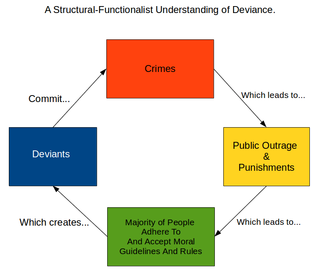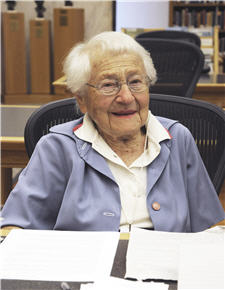A psychiatrist is a physician who specializes in psychiatry. Psychiatrists are physicians and evaluate patients to determine whether their symptoms are the result of a physical illness, a combination of physical and mental ailments or strictly mental issues. Sometimes a psychiatrist works within a multi-disciplinary team, which may comprise clinical psychologists, social workers, occupational therapists, and nursing staff. Psychiatrists have broad training in a biopsychosocial approach to the assessment and management of mental illness.
Anti-psychiatry, sometimes spelled antipsychiatry without the hyphen, is a movement based on the view that psychiatric treatment is often more damaging than helpful to patients, highlighting controversies about psychiatry. Objections include the reliability of psychiatric diagnosis, the questionable effectiveness and harm associated with psychiatric medications, the failure of psychiatry to demonstrate any disease treatment mechanism for psychiatric medication effects, and legal concerns about equal human rights and civil freedom being nullified by the presence of diagnosis. Historical critiques of psychiatry came to light after focus on the extreme harms associated with electroconvulsive therapy or insulin shock therapy. The term "anti-psychiatry" is in dispute and often used to dismiss all critics of psychiatry, many of whom agree that a specialized role of helper for people in emotional distress may at times be appropriate, and allow for individual choice around treatment decisions.

Fredric Wertham was a German-American psychiatrist and author. Wertham had an early reputation as a progressive psychiatrist who treated poor black patients at his Lafargue Clinic at a time of heightened discrimination in urban mental health practice. Wertham also authored a definitive textbook on the brain, and his institutional stressor findings were cited when courts overturned multiple segregation statutes, most notably in Brown v. Board of Education.
The Menninger Foundation was founded in 1919 by the Menninger family in Topeka, Kansas. The Menninger Foundation, known locally as Menninger's, consists of a clinic, a sanatorium, and a school of psychiatry, all of which bear the Menninger name. Menninger's consisted of a campus at 5800 S.W. 6th Avenue in Topeka, Kansas which included a pool as well as the other aforementioned buildings. In 2003, the Menninger Clinic moved to Houston. The foundation was started in 1919 by Dr. Charles F. Menninger and his sons, Drs. Karl and William Menninger. It represented the first group psychiatry practice. "We had a vision," Dr. C. F. Menninger said, "of a better kind of medicine and a better kind of world."

There was systematic political abuse of psychiatry in the Soviet Union, based on the interpretation of political opposition or dissent as a psychiatric problem. It was called "psychopathological mechanisms" of dissent.

Forensic psychiatry is a subspeciality of psychiatry and is related to criminology. It encompasses the interface between law and psychiatry. According to the American Academy of Psychiatry and the Law, it is defined as "a subspecialty of psychiatry in which scientific and clinical expertise is applied in legal contexts involving civil, criminal, correctional, regulatory, or legislative matters, and in specialized clinical consultations in areas such as risk assessment or employment." A forensic psychiatrist provides services – such as determination of competency to stand trial – to a court of law to facilitate the adjudicative process and provide treatment, such as medications and psychotherapy, to criminals.

The Institute of Mental Health (IMH), formerly known as Woodbridge Hospital, is a psychiatric hospital in Hougang, Singapore.
Liaison psychiatry, also known as consultative psychiatry or consultation-liaison psychiatry, is the branch of psychiatry that specialises in the interface between general medicine/pediatrics and psychiatry, usually taking place in a hospital or medical setting. The role of the consultation-liaison psychiatrist is to see patients with comorbid medical conditions at the request of the treating medical or surgical consultant or team. Consultation-liaison psychiatry has areas of overlap with other disciplines including psychosomatic medicine, health psychology and neuropsychiatry.

Castle Peak Hospital is the oldest and largest psychiatric hospital in Hong Kong. Located east of Castle Peak in Tuen Mun, the hospital was established in 1961. It has 1,156 beds, providing a wide variety of psychiatric services such as adult psychiatry, forensic psychiatry, psychogeriatric services, child and adolescent psychiatry, consultation-liaison psychiatry and substance abuse treatments. All wards in the hospital are equipped to accommodate both voluntary and involuntary admitted patients.
A mental health professional is a health care practitioner or social and human services provider who offers services for the purpose of improving an individual's mental health or to treat mental disorders. This broad category was developed as a name for community personnel who worked in the new community mental health agencies begun in the 1970s to assist individuals moving from state hospitals, to prevent admissions, and to provide support in homes, jobs, education, and community. These individuals were the forefront brigade to develop the community programs, which today may be referred to by names such as supported housing, psychiatric rehabilitation, supported or transitional employment, sheltered workshops, supported education, daily living skills, affirmative industries, dual diagnosis treatment, individual and family psychoeducation, adult day care, foster care, family services and mental health counseling.
Child and adolescent psychiatry is a branch of psychiatry that focuses on the diagnosis, treatment, and prevention of mental disorders in children, adolescents, and their families. It investigates the biopsychosocial factors that influence the development and course of psychiatric disorders and treatment responses to various interventions. Child and adolescent psychiatrists primarily use psychotherapy and/or medication to treat mental disorders in the pediatric population.
A psychiatric assessment, or psychological screening, is the process of gathering information about a person within a psychiatric service, with the purpose of making a diagnosis. The assessment is usually the first stage of a treatment process, but psychiatric assessments may also be used for various legal purposes. The assessment includes social and biographical information, direct observations, and data from specific psychological tests. It is typically carried out by a psychiatrist, but it can be a multi-disciplinary process involving nurses, psychologists, occupational therapist, social workers, and licensed professional counselors.
Psychiatry is the medical specialty devoted to the diagnosis, prevention, and treatment of deleterious mental conditions. These include various matters related to mood, behaviour, cognition, and perceptions.

The Citizens Commission on Human Rights International (CCHR) is a nonprofit organization established in 1969 by the Church of Scientology and psychiatrist Thomas Szasz, headquartered in Los Angeles, California. Its stated mission is to "eradicate abuses committed under the guise of mental health and enact patient and consumer protections." Many critics regard it as a Scientology front group whose purpose is to push the organization's anti-psychiatric agenda.
The Institute of Mental Health in Belgrade, established in 1963, is the first social-psychiatric institution in Southeast Europe. It is a tertiary care institution that specializes in the fields of psychiatry, addiction diseases, clinical psychology, epileptic medicine, clinical neurophysiology, psycho-pharmacology, psycho-therapy and mental illness. Treatment is based on the concepts of social psychiatry with the goal of rehabilitation and re-socialization of patients. The Institute serves as a teaching facility for the Belgrade Medical School and several other schools in Belgrade.
Democratic Psychiatry is an Italian real society, as well as a movement for liberation of the ill and weak from segregation in mental hospitals, by pushing for the Italian psychiatric reform. The movement was political in nature but not antipsychiatric in the sense in which this term is used in the Anglo-Saxon world. Democratic Psychiatry called for radical changes in the practice and theory of psychiatry and strongly attacked the way society managed mental illness. The movement was essential in the birth of the reform Basaglia Law of 1978.

Mental health in Russia is covered by a law, known under its official name—the Law of the Russian Federation "On Psychiatric Care and Guarantees of Citizens' Rights during Its Provision", which is the basic legal act that regulates psychiatric care in the Russian Federation and applies not only to persons with mental disorders but all citizens. A notable exception of this rule is those vested with parliamentary or judicial immunity. Providing psychiatric care is regulated by a special law regarding guarantees of citizens' rights.
Psychiatry is, and has historically been, viewed as controversial by those under its care, as well as sociologists and psychiatrists themselves. There are a variety of reasons cited for this controversy, including the subjectivity of diagnosis, the use of diagnosis and treatment for social and political control including detaining citizens and treating them without consent, the side effects of treatments such as electroconvulsive therapy, antipsychotics and historical procedures like the lobotomy and other forms of psychosurgery or insulin shock therapy, and the history of racism within the profession in the United States.

Lucy Dorothy Ozarin was a psychiatrist who served in the United States Navy. She was one of the first women psychiatrists commissioned in the Navy, and she was one of seven female Navy psychiatrists who served during World War II.
Hilde L. Mosse was a German-American psychiatrist. The sister of famed historian of Nazism George Mosse, she, along with fellow psychiatrist Fredric Wertham, helped to form the Lafargue Clinic in Harlem, New York. She shared Wertham's view that comic books were pathological influences on children, though was nowhere near as public a figure as her colleague.










